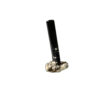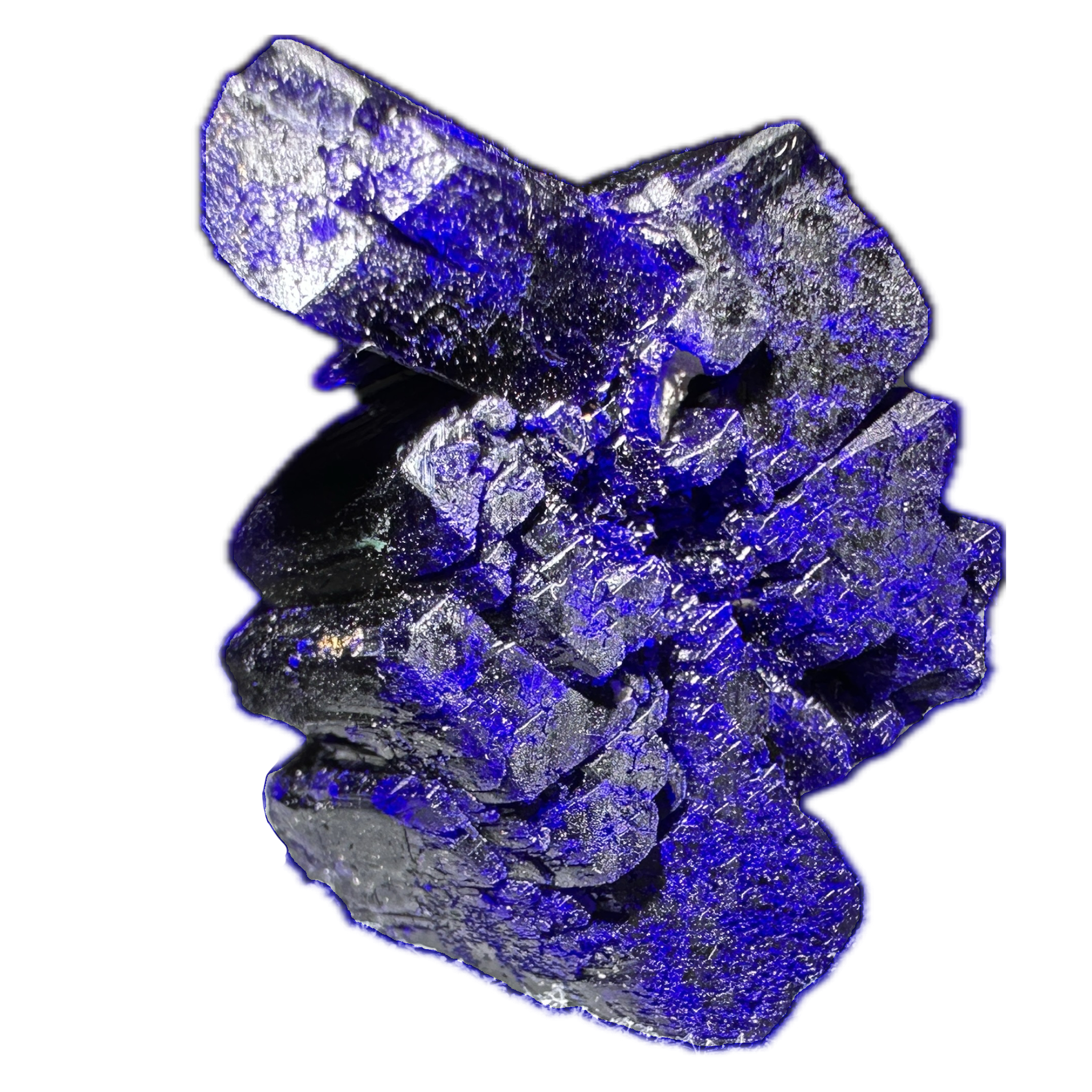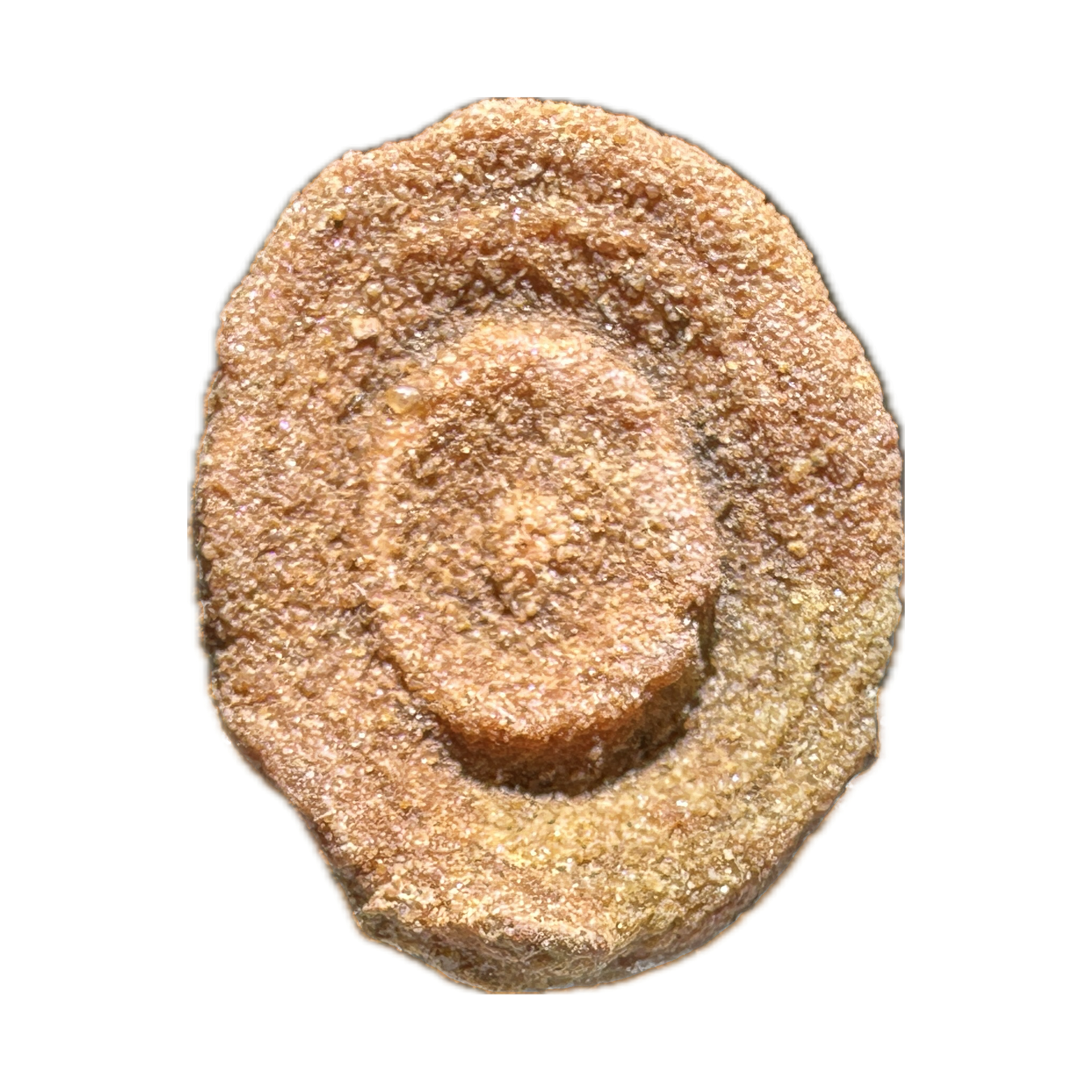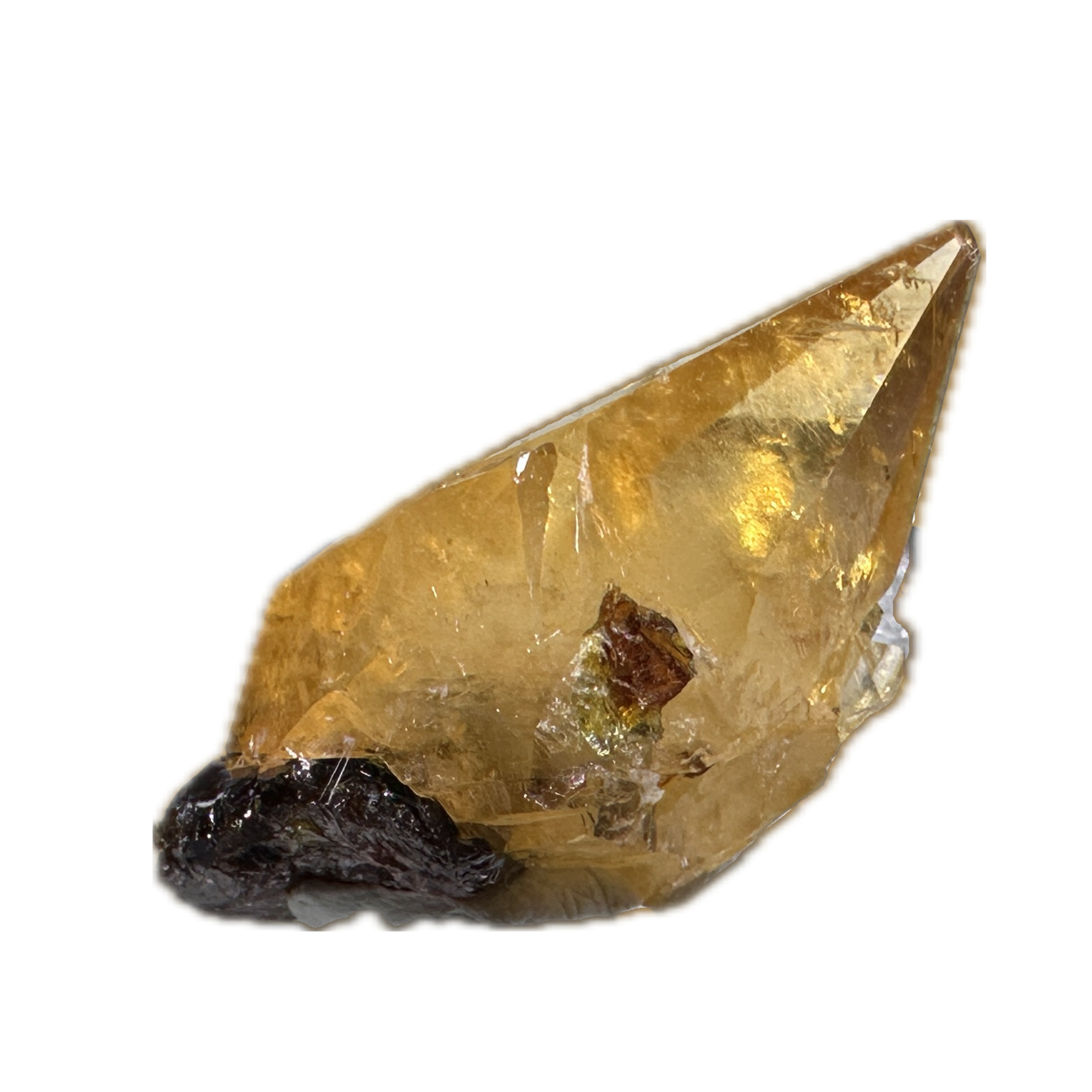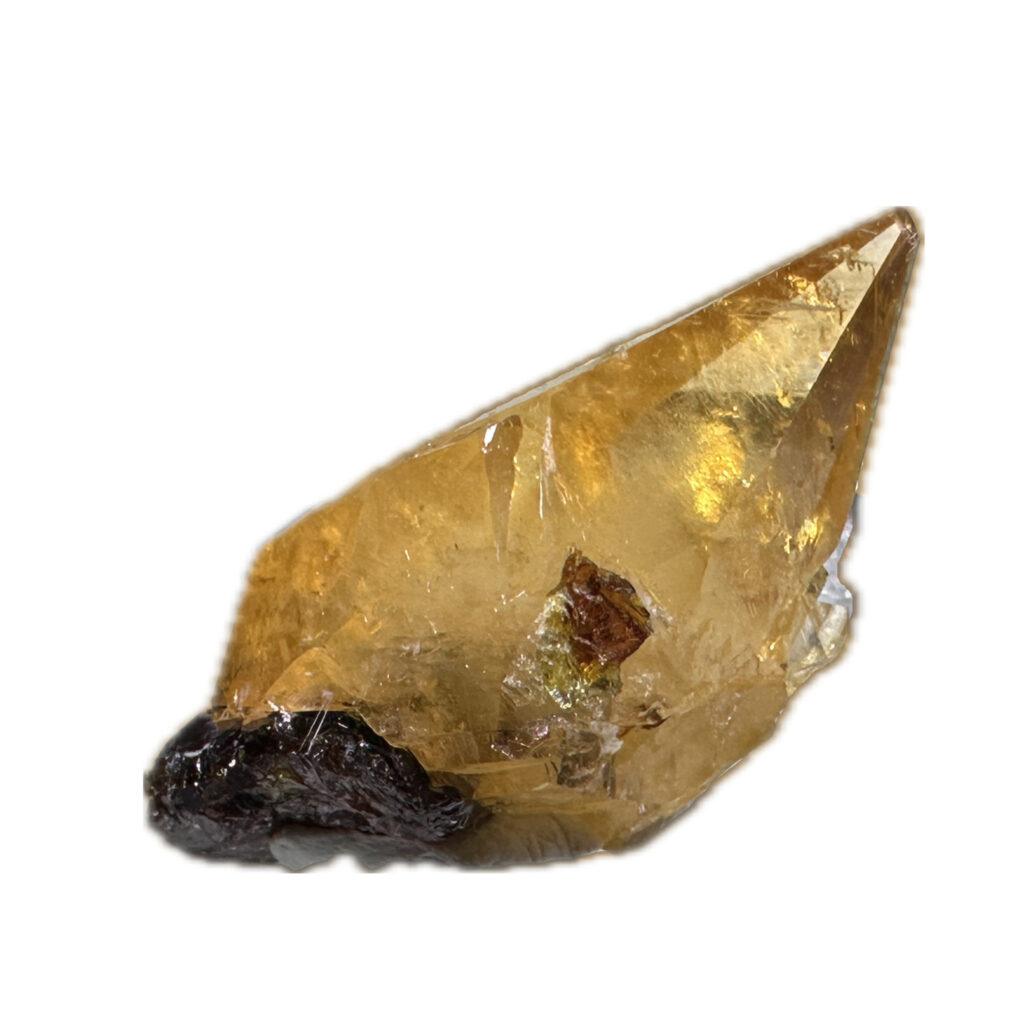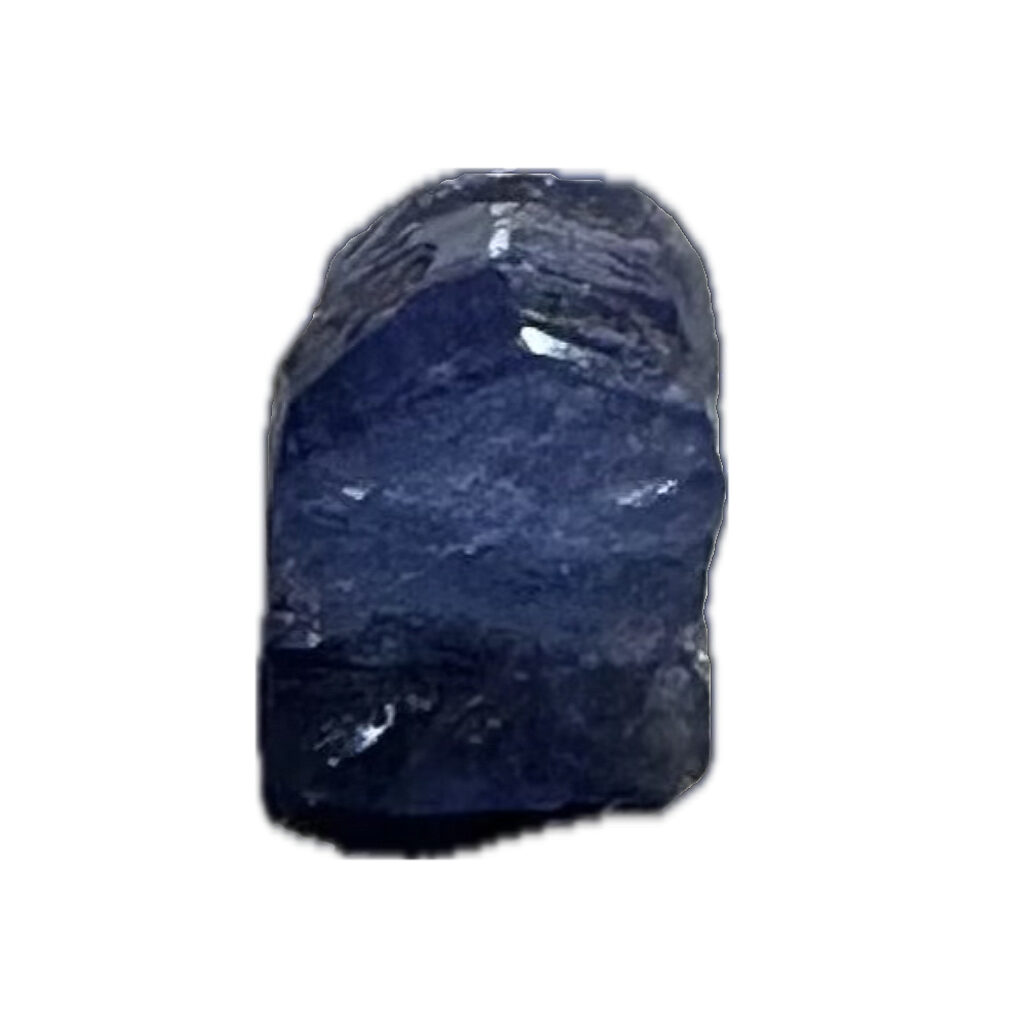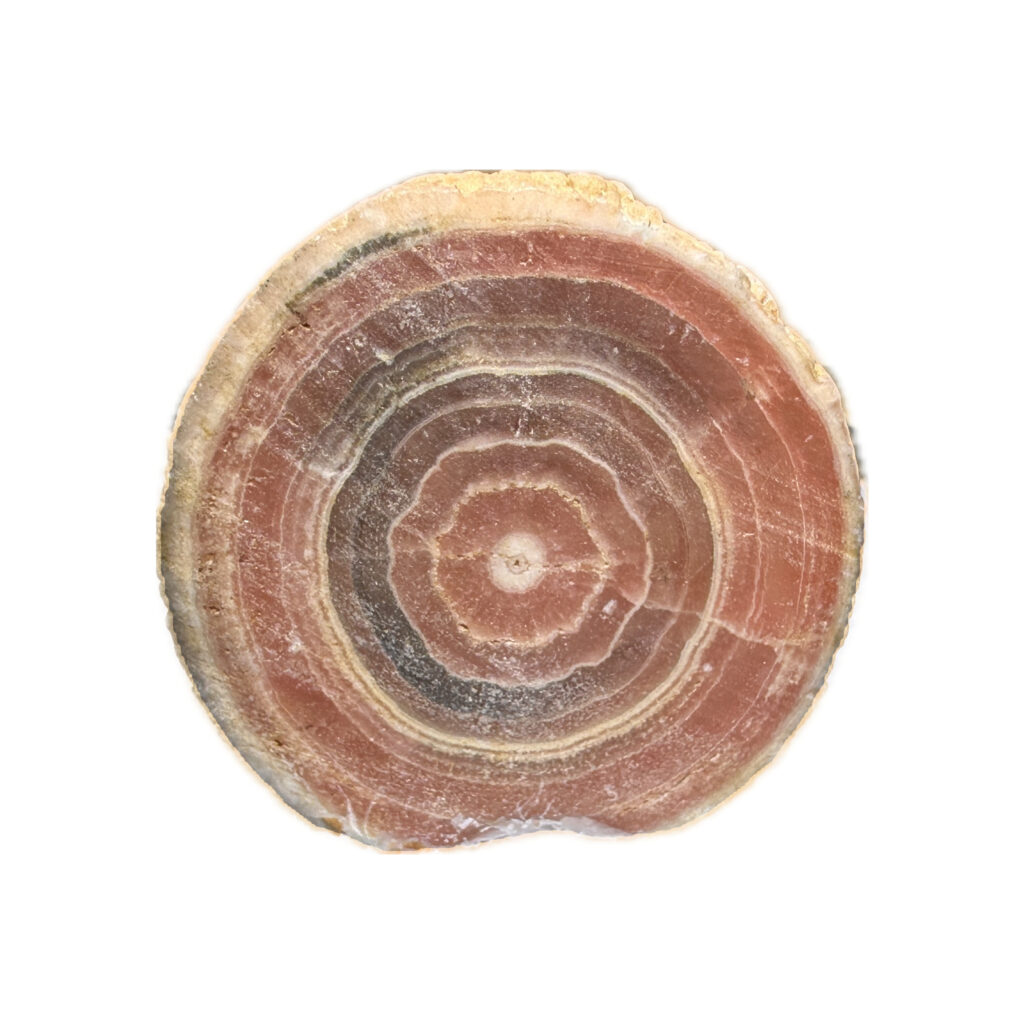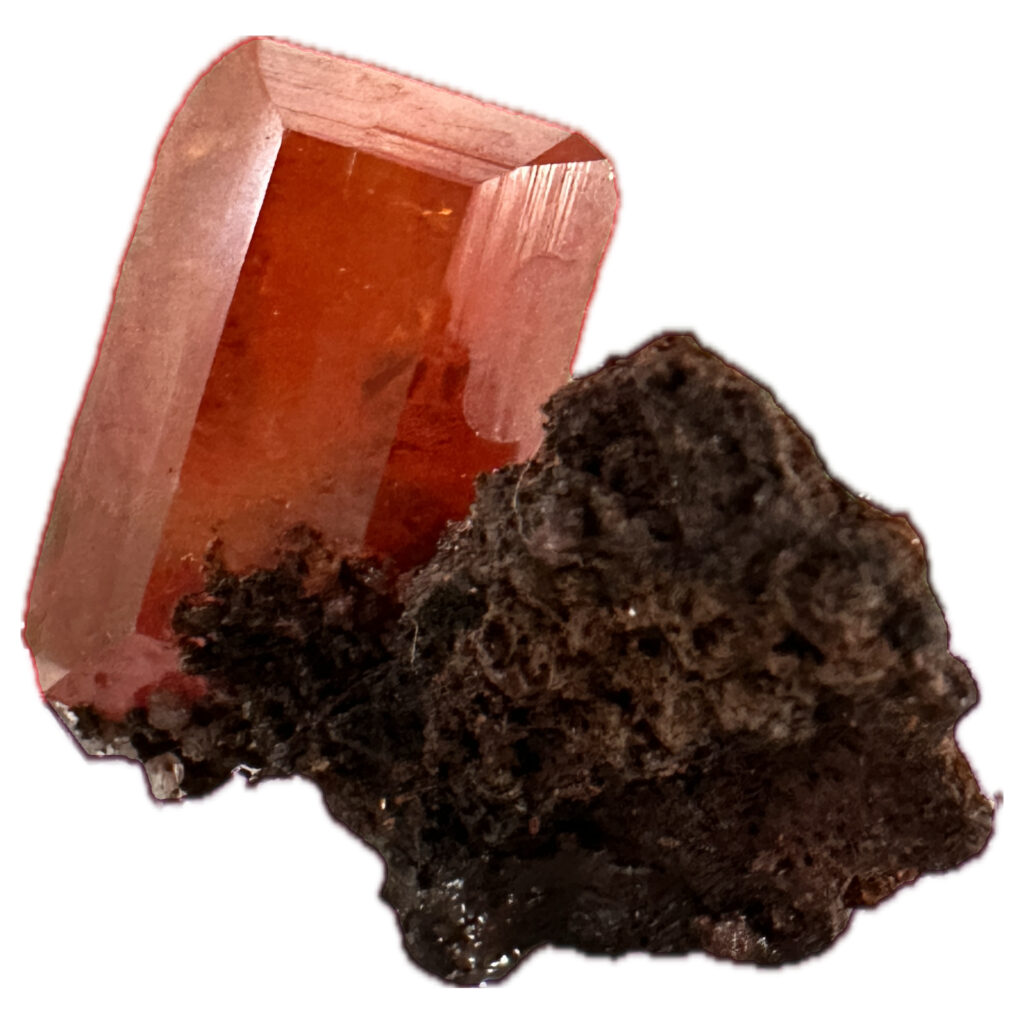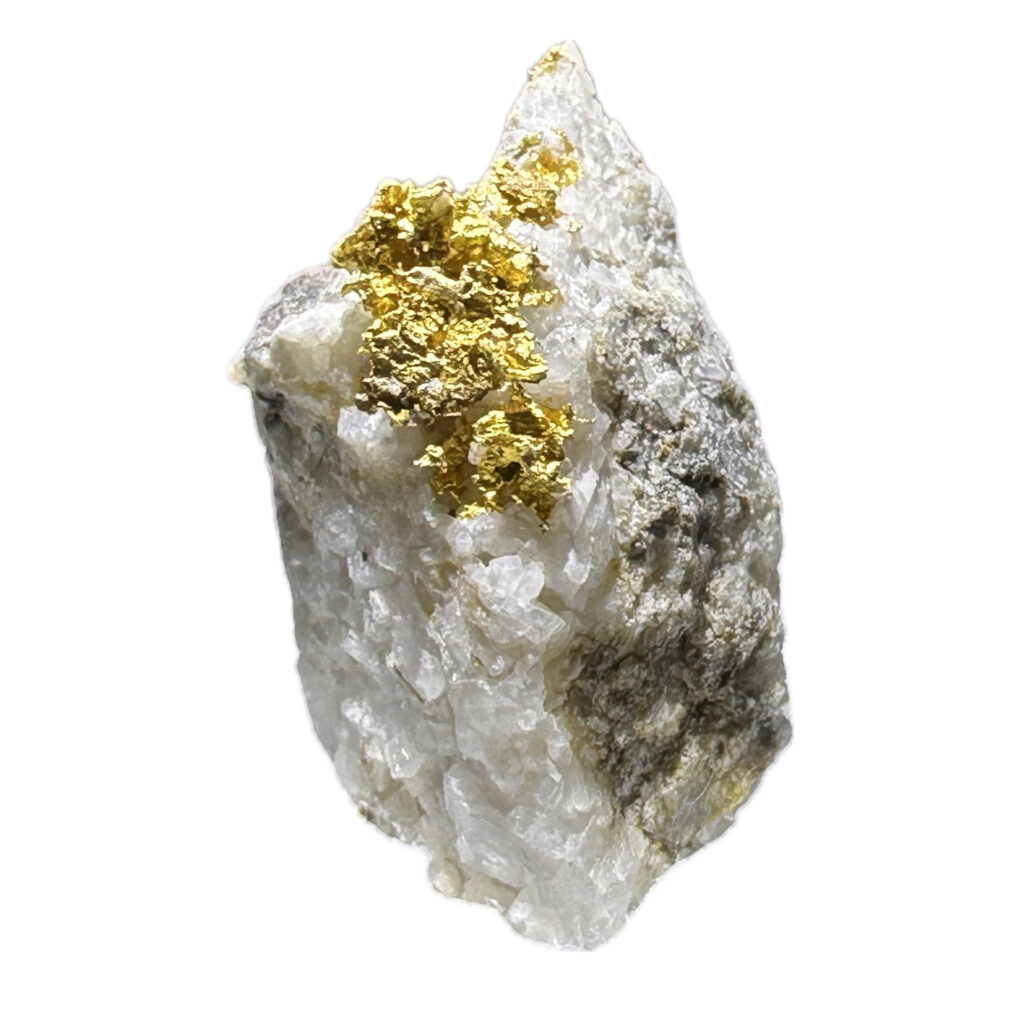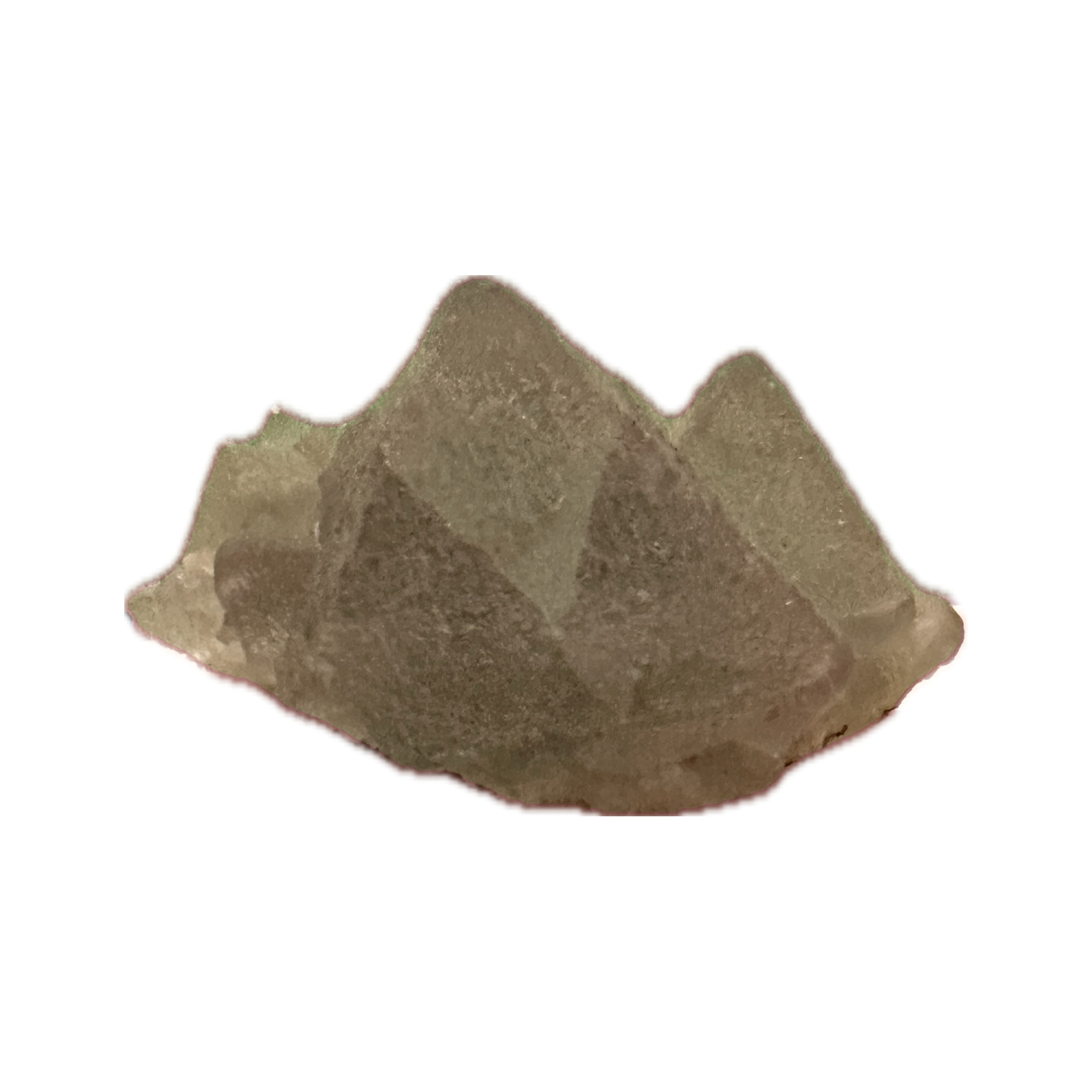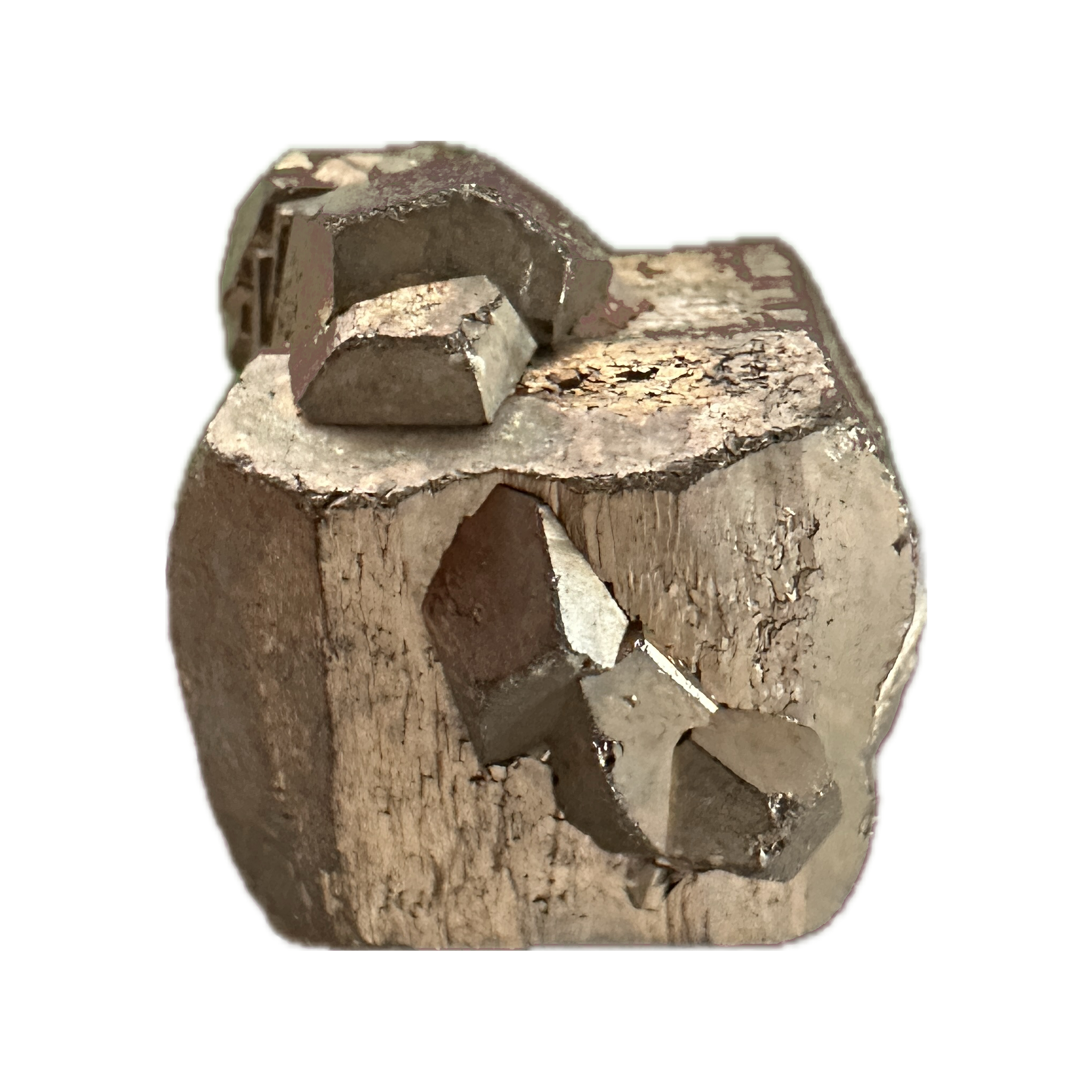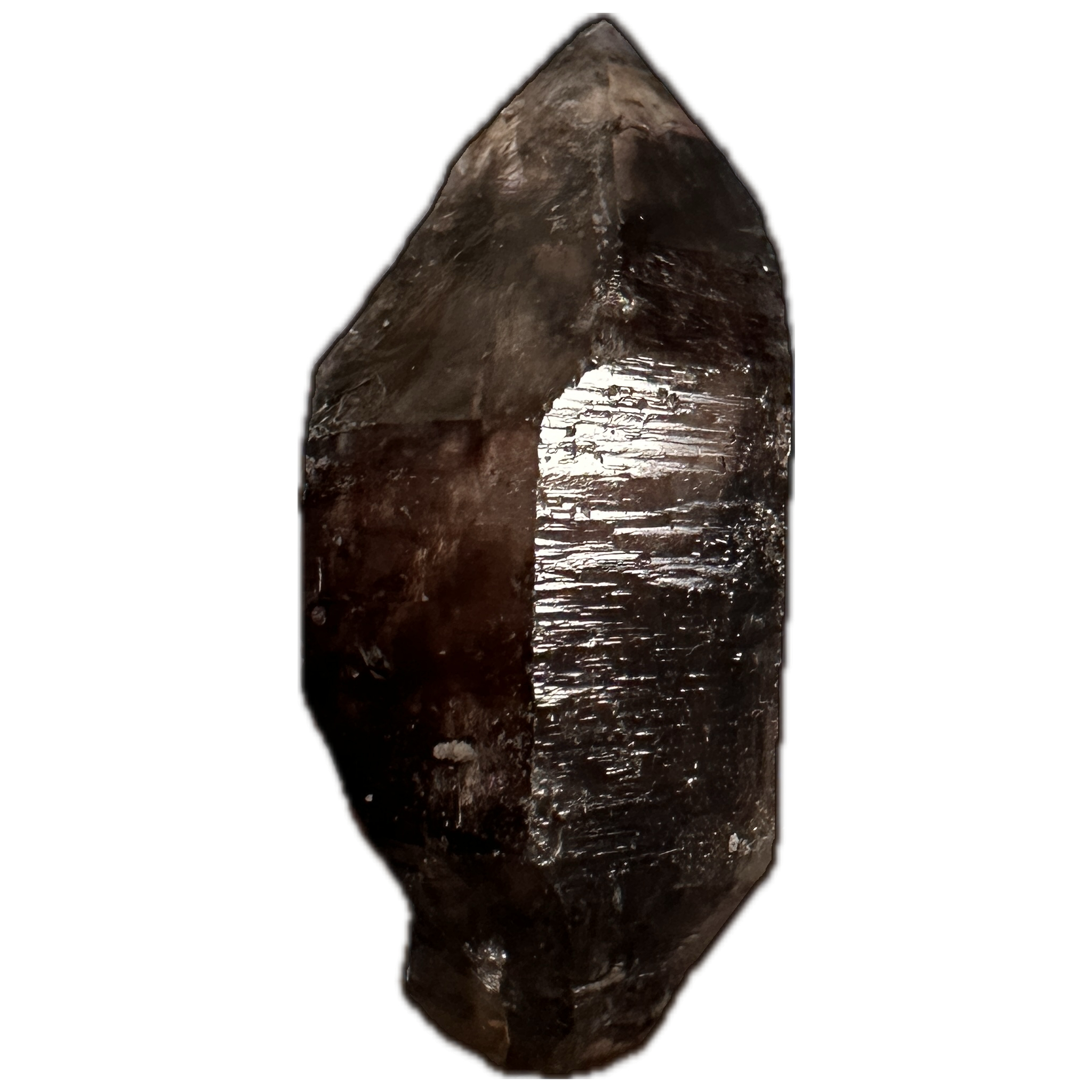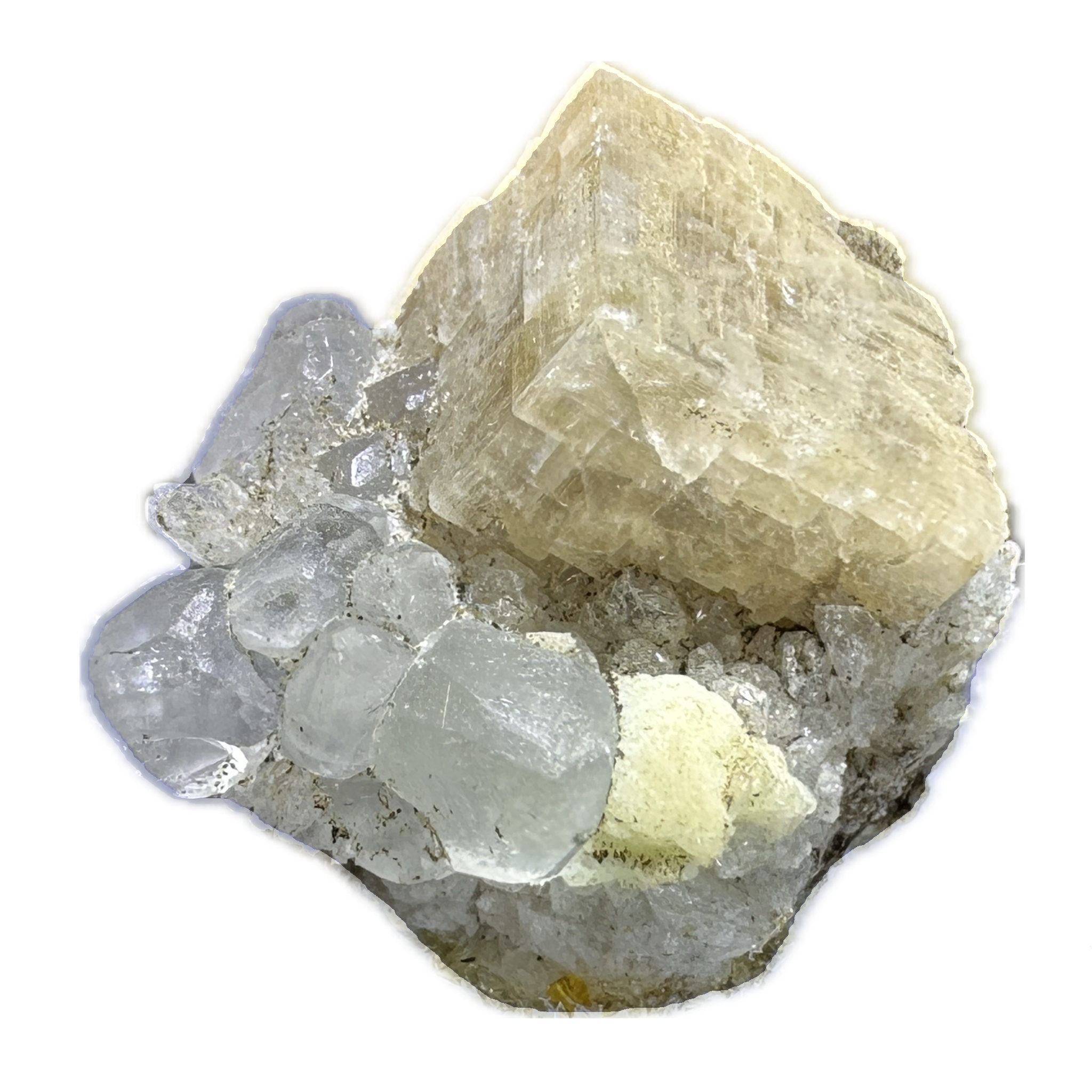Pseudo-Brookite thumbnail mineral, Utah.
Pseudo-brookite refers to a mineral specimen that appears to be brookite but is actually another mineral. Brookite is a titanium dioxide mineral that belongs to the rutile mineral group. Pseudo-brookite specimens from Utah are often found in association with other minerals in diverse geological settings.
Utah is known for its varied mineralogy, and pseudo-brookite specimens from this region have been identified in places like the Thomas Range and other localities in the western part of the state. These specimens are typically labeled as pseudo-brookite due to their resemblance to true brookite crystals.
The pseudo-brookite from Utah may be composed of minerals like anatase or other titanium oxides rather than true brookite. These minerals share similar crystal habits and physical characteristics, leading to misidentification without detailed analysis.
Collectors value pseudo-brookite specimens for their unique geological context and the challenge they pose in terms of identification. The specimens often exhibit intricate crystal formations, and their association with other minerals in Utah’s diverse geological formations adds to their appeal.
When collecting or studying pseudo-brookite specimens from Utah, it is essential to use analytical techniques such as X-ray diffraction or electron microscopy to confirm the mineral composition accurately. This ensures a precise understanding of the mineralogy and enhances the scientific and collector value of the specimens. As with any mineral specimen, care should be taken to preserve the delicate formations during handling and display.
Thumbnail specimens hold a unique allure in the world of mineral and gemstone collecting, captivating enthusiasts and collectors alike with their petite yet captivating presence. Measuring no more than an inch or so in size, these diminutive wonders possess a distinct charm that sets them apart in the eyes of collectors. To understand why collectors prize thumbnail specimens, we must delve into the fascinating world of mineral collecting, exploring the characteristics and significance that make these tiny treasures so coveted.
Mineral collecting is a hobby as old as civilization itself, with evidence of early human fascination with minerals dating back thousands of years. From ancient civilizations using minerals for ornamental purposes to modern-day collectors meticulously assembling vast collections, the allure of minerals transcends time and culture. Within this vast and diverse hobby, collectors pursue specimens ranging from massive geological formations to minute crystals barely visible to the naked eye. It is within this realm of minuscule marvels that thumbnail specimens carve out their niche, capturing the imagination of collectors with their compact size and exquisite beauty.
At the heart of the appeal of thumbnail specimens lies their diminutive dimensions. Measuring no more than one inch in size, these tiny treasures pack a remarkable amount of geological splendor into a compact package. Despite their small stature, thumbnail specimens often exhibit intricate crystal formations, vibrant colors, and mesmerizing patterns that rival their larger counterparts. Their petite size allows collectors to appreciate the finer details of mineralogy up close, providing a window into the fascinating world of crystallography and mineral formation.
One of the defining characteristics of thumbnail specimens is their rarity. Unlike larger specimens that may be more readily accessible, thumbnail specimens are often limited in quantity and can be challenging to acquire. Their small size makes them easy to overlook in the field, requiring careful searching and meticulous extraction techniques to uncover. As a result, collectors prize thumbnail specimens for their scarcity, viewing them as prized additions to their collections that showcase the beauty and diversity of the mineral kingdom in miniature form.
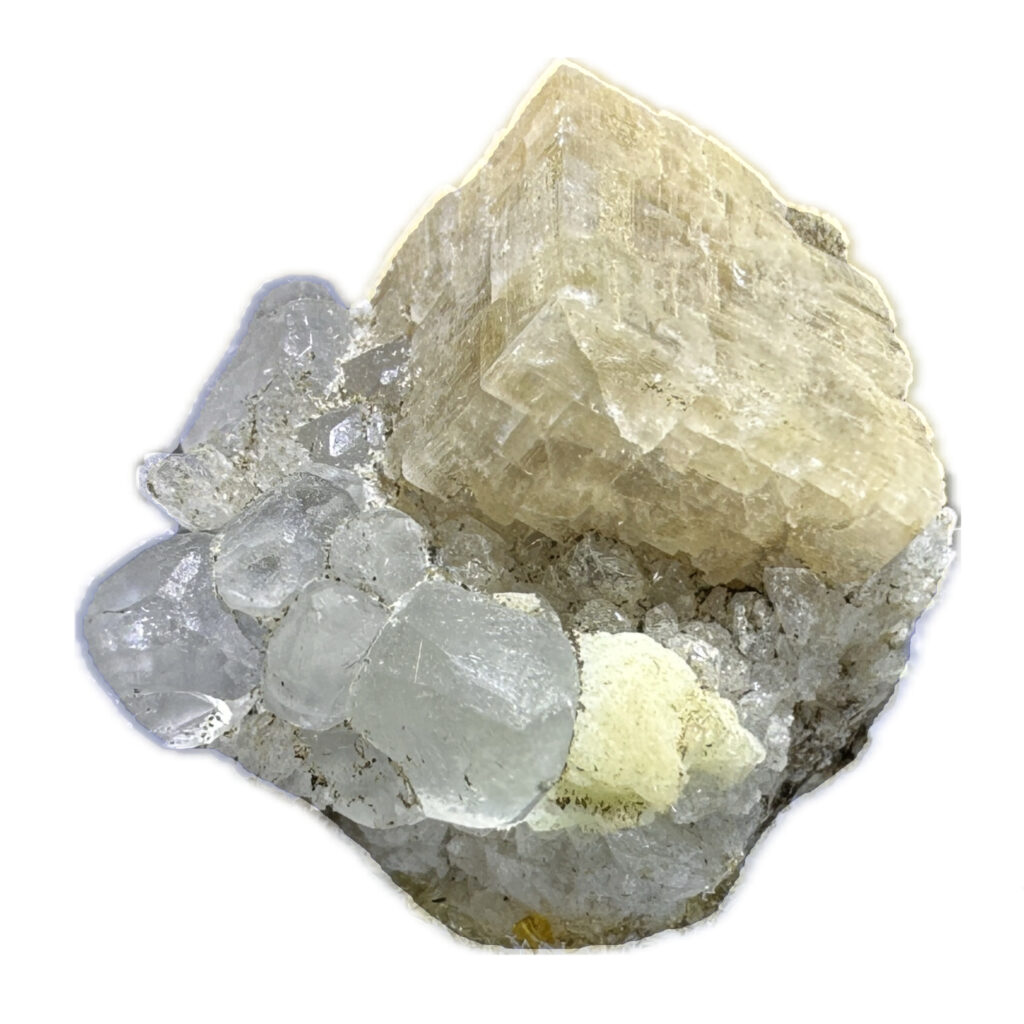
Thumbnail specimens also hold significant scientific value, offering insights into geological processes and mineral formation. Despite their small size, these specimens provide valuable information about the conditions under which they formed, including temperature, pressure, and chemical composition. By studying thumbnail specimens, scientists can gain a better understanding of Earth’s geological history and the forces that shape our planet. As such, collectors play a crucial role in preserving these specimens for future study, ensuring that valuable geological data is not lost to time.
In addition to their scientific significance, thumbnail specimens hold aesthetic appeal for collectors, who are drawn to their exquisite beauty and intricate detail. Despite their diminutive size, these specimens often display vibrant colors, lustrous surfaces, and geometrically precise crystal formations that captivate the eye. Whether it’s the iridescent hues of a tiny opal, the delicate symmetry of a miniature quartz cluster, or the fiery brilliance of a diminutive garnet, thumbnail specimens showcase the extraordinary diversity of the mineral kingdom in all its splendor.
Collectors are also drawn to thumbnail specimens for their versatility and portability. Unlike larger specimens, which may require specialized display cases or storage solutions, thumbnail specimens can be easily housed in small containers or display cases, making them ideal for collectors with limited space. Their compact size also makes them ideal for travel, allowing collectors to take their prized specimens with them wherever they go and share their passion for minerals with others.
Furthermore, thumbnail specimens often serve as valuable educational tools, providing enthusiasts and novices alike with an opportunity to learn about mineralogy and geology. Their small size and accessibility make them ideal for hands-on exploration, allowing collectors to study mineral properties, crystal structures, and geological formations up close. Many collectors also use thumbnail specimens to educate others about the beauty and diversity of the mineral kingdom, sharing their passion through outreach events, educational programs, and online forums.
Prehistoric 101 (Learn about fossils, minerals, and meteorites)
What is a Mineral?
Discovering Prehistoric Life and Fossils




